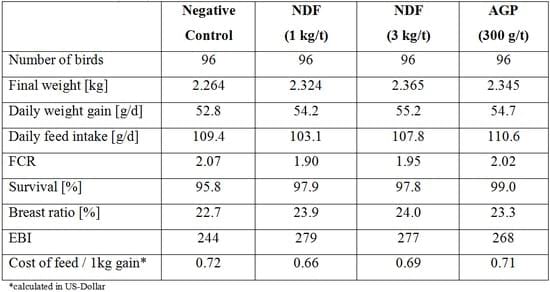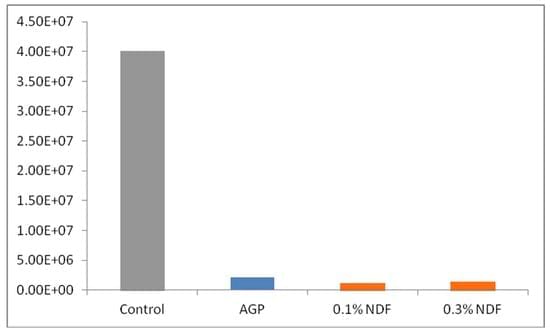|||





Evidence of the development of antibiotic resistant strains of bacteria that are pathogenic to humans has mounted over recent decades; and the practice of using sub-therapeutic levels of antibiotics as growth promoters (AGP) in livestock production has been heavily implicated in this resistance. Worldwide, this connection has led to erosion of consumer trust in agricultural practices that rely on this valuable medical resource. Increasingly, legislation is limiting their use. The shift from AGP to alternatives begun in Europe rapidly spread, as exporting countries have had no choice but to comply. A number of alternative feed additives have been investigated. Among the new, tested compounds are acidifiers. These supplements include organic acids and their salts, like diformates. Potassium diformate, for instance, the potassium double-salt of formic acid, rapidly gained formal approval as the first legal alternative for in-feed antibiotics in Europe.
Formic acid and its salts are well known to improve productivity, acting against pathogens, which decreases the pressure on the animal’s immune system. Thus, more nutrients will be available for productive functions such as growth or laying; whilst acting on the feed matrix to provide optimal conditions for digestive enzymes, particularly pepsin, releasing more nutrients from the feed. The double sodium salt of formic acid, while having the same antimicrobial properties as formic acid, has become more commonly used in poultry production, as it is easier to handle and does not negatively affect palatability, as can the pure acid.
Thus, several trials have been carried out in order to demonstrate the effectiveness of sodium diformate (ADDCON) under various conditions world-wide.
First reports on the effect of sodium diformate in poultry nutrition appeared in 2009 (Lückstädt & Theobald) on the effect against Salmonella, Campylobacter and further gut microbiota. Later that year a paper entitled “Reducing broiler feed costs with diformate” got published by Swick & Lückstädt. Further, reports from Lückstädt, Eidelsburger and Theobald (2010) as well as Lückstädt & Theobald (2010) concentrated on the use of diformate in broiler under various dosages as well as against positive and negative controls. The effect of the additive in turkey nutrition was confirmed in 2011 by Glawatz, Meyer and Lückstädt. Finally, the anti- Salmonella effect of sodium diformate got confirmed by DEFRA in 2011/12.
The benefits of incorporating sodium diformate in broiler diets were as well tested recently under tropical conditions in a trial conducted at the research farm of the University of Agriculture and Forestry in Ho Chi Minh City, Vietnam. The acidifier was tested at two different dosages (0.1% or 0.3% NDF) in a commercial broiler diet, against the same diet containing either no acidifier (control group) or an antibiotic growth promoter (AGP: BMD-10 at 300g/t of feed). Feed and water were available ad libitum. The effects of NDF on performance parameters of poultry (livestock viability, live weight, feed consumption and feed conversion), on dressing (breast meat ratio), as well as litter quality (water content, bacterial load) were examined. 384 day old birds (Cobb 500) were randomly selected and divided into 4 treatment groups with 96 chicks each. The diets were fed for 42 days. Performance data were measured at the end of the trial (Tab. 1).
Table 1: Performance-, dressing- and economic-parameters in broiler fed with or without sodium diformate (NDF)

Overall performance in the groups with NDF was increased, even when compared to the AGP-group. The addition of 0.1% sodium diformate under the circumstances of the trial resulted in an increase of 2.6% in weight gain, while the feed conversion rate was improved by 8.2%, compared to the negative control. Furthermore, this NDF-inclusion was best according to the broiler index as well as being the most cost effective. Furthermore, birds fed with NDF had a numerical improvement when dressed. The breast meat ratio increased by more than 5% if compared to the negative control, while the improvement compared the AGP-group was still nearly 3%. One could speculate that this was caused by the improved protein digestibility, which is often reported in conjunction with the use of dietary acidifier.

Figure 1: E.coli numbers (MPN/g) in faeces of broiler fed with or without NDF
Finally, the faecal quality and content of birds was examined. It could be stated that the litter quality - based on the moisture content, was significantly (P<0.05) improved in birds fed NDF at both dosages (tested against the negative control). Moisture content in the faecal matter was reduced by either 7% (in the 0.1% NDF-dosage) or 5% (at 0.3% inclusion of the additive); while the AGP-group had only a reduction of 4% in the moisture content of faecal matter (moisture content of control litter was 57.2%). In conjunction with the improved quality of the litter is also the significantly reduced (P<0.05) level of E.coli in the faeces (Fig. 1), which is measured as MPN (Most Probable Number). If looked at the reduction rate, one could say that the use of dietary sodium diformate reduces the E.coli load in faeces by 96-97%!
Numerous reports have demonstrated how including sodium diformate in broiler diets has beneficial effects on performance by lowering bacterial pathogen load and improving nutrient digestibility. These benefits are turned into economic returns, despite the perceived increase in feed cost of using additives.
This article was Partly published at Poultry Digital Magazine.
Dear Mr. Christian Luckstadt
This is a good article for feed efficiency, growth improvement and to reduce E.coli counts in the gut. These are three attributes that the integrated poultry processors look for and if one can achieve without the use of antibiotics in the starter feed, it can be a big achievement. Reducing E.coli counts in the fecal matter by 96-97% means, E.coli counts in the chill tank would also be reduced leading to more hygienic poultry meat product. This also reduces the need of using higher doses of chlorine in the chill tank.
Dr. Milind Limaye, There is a good article on the mechanism of antimicrobial activity of organic acids by Dr. Hans Van Dam of Wageningen University, Netherlands, Feed.Mix Vol.14 No. 4, www.agriworld.nl